|
The Regulations If you have a covered process at your facility, both OSHA and the EPA require that your facility conduct a Compliance Audit at least every 3 years. Compliance Audit requirements are outlined in OSHA's regulation, the PSM Standard, in 29 CFR 1910.119(o) and in EPA's regulation, the RMP Rule, in 40 CFR 68.58 and 68.79.
Purpose of Compliance Audits Audits are often looked upon with distain because they usually uncover things we miss and we immediately associate this with getting in trouble. But, if you can change your attitude a little and look at a Compliance Audit as an opportunity to improve your overall program, it can be one of the Best Management Practices there is. Compliance Audits are intended to find weaknesses in a program. That's their job. That's what they are designed to do. Not to get someone in trouble, but to improve the adequacy of your PSM / RMP program. Sure, Compliance Audits are performed to determine how well the PSM / RMP Prevention Program complies with the OSHA's PSM Standard and EPA's RMP Rule requirements. The reports are alike a score card. They indicate whether personnel are following the policies and procedures outlined in your own system, written by your team. Performing Compliance Audits will help the facility correct deficiencies and to continually improve your PSM / RMP Program.
First, a consultant will likely be more objective. You know what you "want" your program to say or believe all the documentation is in place, but a person not familiar with the PSM / RMP Prevention Program will be able to objectively tell you whether or not it actually says what you want it to say or that the documentation you have actually meets the intent of the regulation. Consider when you wrote a paper for school. After working with it for awhile and then reading it 10 times, didn't it say what you wanted it to say? It was perfect, right? And, then, you asked your mom or your room mate to read it and they had all kinds of comments and questions. Appendix C to the PSM Standard states that the "audit should be conducted or lead by a person knowledgeable in audit techniques and who is impartial towards the facility or area being audited." It's difficult to check yourself and your own work at times, and having another opinion will only make your program stronger. In addition, an outside party might be familiar with ways of ahndling a situation or presenting required information in a way you haven't thought of. People whose job it is to conduct PSM & RMP Compliance Audits see a wide variety of documents that they likely will be able to share with you. If you don't want to hire a consultant, if your facility is part of a larger organization that has other plants also covered by PSM / RMP, consider creating a "Round Robin" auditing schedule where the PSM /RMP Coordinator from one plant audits the PSM / RMP Program at another plant. This way Best Management Practices (BMPs) can be shared across the organization so that improvement is made across the board. And, remember, you can audit your own program. It might not be the optimal method, but it isn't against the rules. Compliance Audits Are a Best Management Practice Remember, the purpose of the audit isn't to "nail" someone or get someone in trouble. The purpose of the Compliance Audit is to idenify those tasks, items, documentation that might have been overlooked or require some improvement. It's all about improvement. It's all about continuous improvement. Compliance Audits are great BMPs. This story is brought you by Schneider Risk Management.
If you have any questions, please call us at (231) 288-1076.
0 Comments
even months after an incident occurred that can affect the “days away,” “transfer” and other information on the log. Tier 2 Reports – Has your company started any new processes this past year? Are there any new chemicals stored on site? If so, determine the quantities and how and where the materials are managed on site. Now is a good time to update your chemical inventory so that you are ready and able to prepare your Tier 2 Report. Tier 2 Reports are due March 1, 2021. And, don’t forget, a thorough and accurate chemical inventory supports other programs like Right-to-Know, oil and chemical spill prevention (SPCC and PIPP) and storm water pollution prevention. Air Permit Reports – Depending on your emission units and permit terms and conditions, you may have monthly, quarterly, semi-annual or annual reports to submit. It is a good idea to check in with the staff responsible for collecting data to ensure it is complete and accurate and that the data will be available when needed. Toxic Release Inventory – TRI reports aren’t due until July 1st. And although you still have some time, it is always a good idea to get a jump start on collecting necessary data, which can be time consuming and cumbersome. If you already know that chemical quantities exceed thresholds, start ordering 2020 data or reports from appropriate company departments and vendors now so you have plenty of time to assemble and analyze the data to prepare the TRI report and submit it on time. If you are unsure whether TRI Reporting is required, the first step is to conduct an Applicability Determination to identify whether regulatory thresholds have been exceeded. This activity examines the raw materials, processes and wastes generated by a facility and compares the results with the regulatory thresholds. If thresholds are exceeded, then a TRI report Form A or Form R are required. Online Reporting Access – Just like the fire department wants you to check the batteries in the smoke detectors at home during the New Year, it is also a great time to check your usernames and passwords to make sure they are current and still work so that your online access is not interrupted when you go to enter your data. Some agencies even require you to change your password annually. The new year is also a good time to make sure that everyone at the facility involved in the reporting process still knows their login information and how to use it. Getting these items resolved now will help avoid headaches as you approach reporting deadlines. If you have questions about reporting or applicability of regulations,
give us a call at (231) 288-1076. We are happy to help! If you have a process that contains highly hazardous chemicals, it’s likely that you are required to implement a Process Safety Management program at your facility. If you have established your program, then you already know that it is everyone’s responsibility to protect people and the environment from exposure to highly hazardous chemicals. And, having systems in place to prevent exposures and reduce the potential for catastrophic event like a significant release of toxic or flammable material is what Process Safety Management is all about. So, how does Process Safety Information (PSI) fit into this system?
The rule doesn’t provide allot of guidance on how to gather the information, what form it should take or what to do with the information once you have it. But we will get into these kinds of details later. As time goes on, we will explore each of the PSI requirements in future posts. Today we are going to focus on the purpose of PSI.
The Purpose of PSI The regulation simply states that, “The compilation of written process safety information is to enable the employer and the employees involved in operating the process to identify and understand the hazards posed by those processes involving highly hazardous chemicals.” In our opinion, though, PSI is the backbone of the PSM Program. PSI provides the building blocks for the rest of your PSM Program. And we are in agreement with Appendix C in that having complete and accurate PSI is essential for an effective PSM program. PSI is a core requirement. It is a necessity. Imagine, if accurate information is not maintained and something happens, how would you deal with the situation if you don’t know what kind of materials are in your process. It’s kind of like following a recipe, if you don’t know what the ingredients are, how do you know that your cake will turn out? If you don’t know what kind of gasoline your car runs on, how do you know what to put in it if you run out of gas? If you don’t know what kind of equipment is in your refrigeration system, how will know what to do when something needs repair or replacement? It’s the same principle. There is basic information you need to have on hand in order to run your process effectively and efficiently. So, let’s repeat the mantra. Complete and accurate PSI is imperative. It is really, Really, REALLY important because it supports everything else you do. How Does PSI Inform the rest of your PSM Program? PSI is the foundation of your entire PSM program. You use PSI to build your program. It intersects and interacts with all the other PSM program elements. We’ll keep it simple for now. Here are a few examples of how PSI affects the rest of your program:
Up Next – The details Over the next several months we will be posting some details about each of the required PSI. That is the information required by PSM and some guidance on what it should look like and how to use it. As businesses begin re-opening and more people are returning to work, it is good to know that OSHA has an understanding that some companies may have had difficulty complying with OSHA standards during the Pandemic shut-down.
OSHA published a Memorandum entitled, “Discretion in Enforcement when Considering an Employer's Good Faith Efforts During the Coronavirus Disease 2019 (COVID-19) Pandemic.” Even though this OSHA Memorandum was published in April, it is worth taking another look at it. The Memorandum explains that OSHA understands that COVID pandemic has created a lot of new and unusual situations to deal with at work, and that many factors have affected our businesses over the past several months that have hindered our ability to comply with OSHA standards, such as: 1) employees not showing up for work so they miss training sessions; 2) consultants not able to travel to your facility to perform an audit; 3) regularly scheduled testing was suspended to prevent the spread of COVID-19; and the list goes on. Not a Free Ride So, OSHA gets it and they are trying to take into consideration these hardships when it comes to your compliance or lack thereof. Now that COVID-19 cases are decreasing in some geographic areas, OSHA is returning to their original inspection planning policy for prioritizing and performing inspections. That should come as no surprise. The Inspectors are returning to their jobs too. But under the circumstances, and per the Memorandum, OSHA will be “Considering Good Faith Efforts” made to get work done and stay in compliance with OSHA regulatory requirements during pandemic. But, it is not a “Free Ride.” You don’t automatically pass Go and receive a pardon, so to speak. Instead, there are 3 stipulations to consider:
Let’s break this down. Annual or Recurring Requirements: In its memorandum, OSHA provides several examples in an Annex of types of situations where discretion can be applied. You can read the details for yourself here, but they include annual audiograms, annual HAZWOPER training, annual fit testing and Process Safety Management requirements. Good Faith Effort: Inspectors will be evaluating whether you have made a “Good Faith Effort” to comply with OSHA standards applicable to your site. What interim measures might have been employed if full measures could not be implemented to ensure employees are not exposed to hazards for which they were not trained? They will be asking you to demonstrate that you “thoroughly explored all options to comply with applicable standard”. For example, did you determine whether you could employ virtual or remote communication strategies to conduct training instead of holding in-classroom training. Demonstrate the “Good Faith Effort” to comply: This means you need documentation that demonstrates you made the effort. That could include letters (or emails) showing that a consultant has closed, a memo-to-file explaining your situation and how compliance could not be met because of pandemic-related circumstances. If you cannot demonstrate your effort to comply, the memorandum says that “a citation may be issued” according to current OSHA enforcement policy. And, if a citation is issued, OSHA may return to conduct a monitoring inspection. Summary OSHA will be using enforcement discretion on whether or not to issue a citation to those companies that can demonstrate that they were working in Good Faith to comply with OSHA’s periodic requirements, but the COVID-19 pandemic played a significant role in preventing their compliance. As always, it is best to be prepared with solid documentation, than it is to risk being cited when OSHA shows up at your door. Recording Reportable Injuries and Illnesses has always been challenging, and today we are once again faced with a new challenge called COVID-19. OSHA has posted some information on its web page to help employers with the recordable illness question. OSHA recordkeeping requirements at 29 CFR Part 1904 mandate covered employers record certain work-related injuries and illnesses on their OSHA 300 log.
This guidance is found at the following OSHA.gov link, in a blue box along the right side of the page. You can also visit OSHA’s Injury and Illness Recordkeeping and Reporting Requirements page for more information. 2155 W. Sherman Boulevard
Muskegon, Michigan 49441 (231) 288-1076 The USEPA published a final rule, entitled, “Management Standards for Hazardous Waste Pharmaceuticals and Amendment to the P075 Listing for Nicotine” in the Federal Register on February 22, 2019. According to the USEPA announcement, the final rule establishes cost-saving, streamlined standards for handling hazardous waste pharmaceuticals to better fit the operations of the healthcare sector while maintaining protection of human health and the environment.
This final rule will help protect drinking and surface water reducing the amount of hazardous waste pharmaceuticals entering waterways by 1,644 to 2,300 tons on an annual basis. To accomplish this the rule will prohibit disposal of pharmaceuticals in the sanitary sewer by all facilities subject to the rule. This action will help address the issue highlighted by a growing body of publicly available studies documenting the presence of pharmaceuticals in drinking and surface waters as well as their negative impacts to aquatic and riparian ecosystems. In addition, FDA-approved, over-the-counter nicotine replacement therapies (i.e., nicotine patches, gums and lozenges) will no longer be considered hazardous waste when discarded. This will result in significant cost savings and burden reduction in the management of these types of nicotine wastes. Finally, the final rule reaffirms EPA’s long-standing policy that non-prescription pharmaceuticals and other unsold retail items that have a reasonable expectation of being legitimately used/reused or reclaimed are not solid waste. It also provides regulatory certainty that the Resource Conservation and Recovery Act (RCRA) applies when healthcare facilities send unused, unsaleable prescription hazardous waste pharmaceuticals to reverse distributors to receive manufacturer credit. Simultaneously, the rule incorporates flexibilities to accommodate current reverse distribution business practices to facilitate its implementation. SRM will keep you posted on this important development. July 1st is right around the corner. We hope most of you are either done or well on your way to completing your TRI number crunching. While there is still plenty of time to get the TRI reports completed, keep in mind there are some potential pitfalls that can stop you in your tracks:
Due Diligence - TRI Applicability Determination If you are a small but growing company, don’t ignore the TRI reporting again this year because you haven't had to report in the past. Do your annual Due Diligence and prepare some calculations and analyses that you can keep in a compliance folder for when MDEQ or USEPA come to visit. This way you can easily demonstrate whether or not your facility is required to report. Your facility is required to report if it meets ALL three of these threshold criteria:
SRM can help you with your TRI determination. USEPA also has resources to help you at their website. TRI-Me Web Access USEPA requires companies to update their passwords. If you are running short on time or the certifying official is going out of town on a long business trip in two days, updating crucial information can pose a problem. What if you need to change the certifying official due to corporate reorganization? Changing information in the TRI-ME system can take a week or two to complete and can be disruptive. So you shouldn’t wait until the last minute to update your information. A good rule of thumb is to get onto the CDX system sooner rather than later and make sure you and your certifying official can access the CDX system and your TRI forms. Update your passwords as necessary. Check Your Formulas If you are like many TRI preparers, you use spreadsheets to estimate chemical usage and emissions. As we enter or remove data from year to year we can move linked data cells around the worksheet causing errors in the calculations. In addition, “Fat-Finger Syndrome” is still incurable and people often delete or move links without even knowing it. So, take some time every year to examine your formulas and links between worksheets to ensure data integrity. Contact SRM if you have questions about TRI applicability or reporting. We hare happy to help.
fertilizer plant in West, Texas, the President issued an Executive Order 13650 entitled “Improving Chemical Facility Safety and Security.” The goal of the EO was to:
After a myriad of meetings with stakeholders, the USEPA published Amendments to the RMP Rule in the Federal Register on January 13, 2017. Subsequently, delays were issued by the current administration. But on August 17, 2018, the U.S. Court of Appeals decided to vacate the decision to delay and in September the court issued a mandate making the rule effective. And on December 3, 2018, the USEPA published in the Federal Register that the effective date for the amendments was December 3, 2018. See, it’s complicated.
What you really need to know is that some of the amendments require you to make changes to your RMP Program now, some changes won’t be required until March 15, 2021, and still other changes apply either now or in the future, but will only come into play under certain conditions. Lastly, all RMP submittals must be updated to the new requirements by March 14, 2022. I told you it’s complicated. But, let’s look at some of the high points. New Requirements that Must be Implemented Now:
Future Obligations - March 15, 2021:
Obligations to be Implemented under Certain Conditions The best examples here are the Third-Party Audit, Root Cause Analysis and conducting a Public Meeting. Each of these provisions have qualifiers. The regulation states that a third-party audit is only required when:
Similarly, if a reportable release occurs, a root-cause analysis must be done during the incident investigation and the facility must hold a public meeting. These requirements go into effect on March 15, 2021, but are only required if the conditions warrant them. Yes, it is complicated, but manageable. But, be careful, read the regulations carefully so you only implement the things you really need to. If you aren’t sure, give us a call. We are happy to answer questions about these or other RMP or PSM requirements. Here are links to some helpful RMP Rule amendments information.
Something we need to remember when we don’t get the budget we asked for is that EHS is only one of many competing interests within the company. EHS staff compete for capital and operating budgets just like the production department, finance department, IT, HR and others do. Most companies do care about their employees and the environment, but they also have to balance spending on EHS with spending on other projects, like upgrading computer security, installing production information kiosks, replacing the broken security gate, adding a new turntable for line 3 or a conveyor for line 6, and so on. Everything mentioned here has importance to many people in the company and may even contribute to a safer work environment. Measuring & Communicating Risk You are one of the company’s Risk Managers and are there to advise the people who run the company on what you recommend and don’t recommend concerning safety and environmental issues. When you do that, you need to be able to explain the basis of your position. The basis is very important because it helps the decision makers weigh the risks and potential consequences of delaying a particular project against those of acting right now. Let’s be honest, regulations, in and of themselves, have never been the only criteria used in deciding how and when to comply with a particular regulation. Companies cannot fix everything at the same time. It’s the costs and benefits that are the overwhelming factors that drive whether or not a company complies or not with a particular regulation at a particular time. The key to competing for a company’s limited resources is to seek opportunities to level the playing field. Instead of just identifying the need and its cost, be more comprehensive by identifying the risks, benefits and costs avoided. But, to do this, you’ll need to track and understand your accident, environmental compliance and waste management cost data. You also need to know how a regulatory agency might respond to the non-compliance and the potential ramifications to the company. Knowing these variables puts you in a better position to inform your superiors about how much they will save and their civil liabilities, rather than just how much they need to spend. About the Author: Bill Schneider is one of SRM’s Principal Consultants and has also served as an EHS Director for a multi-national firm and as regulator over the course of his career.
In reality there are a plethora of safety and environmental regulations already on the books that apply to these operations even though these new operations associated with marijuana are not mentioned specifically in the regulatory text. From hazard communications, emergency action plans and industrial hygiene to flammable liquids and solid and hazardous waste management; there is a regulation for just about every topic you can think of and they apply to the marijuana industry. Now, don’t get me wrong, there are some unique challenges for this industry due to the existence of controlled substances in the production chain. But the pharmaceutical industry has been dealing with that for many years and has some good models and lessons-learned to follow. The best way for this growing industry to handle all of these EHS requirements is to incorporate them right into the operations and compliance programs from the start. To those familiar with 5S, lean manufacturing and other world class manufacturing principles, this is a familiar exercise, and one implemented at companies who care about the company bottom line and employees. From floor plans to electrical systems. From raw material in the door to product and wastes going out the other end. Plan the Work and Work the Plan. And the Plan includes EHS compliance in the making of a new industry. MIOSHA likes to promote their Safety & Health Management System (SHMS) which includes important elements of any compliance program such as Management Commitment, Employee Involvement, Workplace Hazard Analysis and Hazard Prevention & Control. In other words, team work and being pro-active in detecting problems and correcting them. It’s not rocket science. It’s just good, sound business practice and this approach has been used by successful companies for decades. If you would like more information about EHS compliance programs that work for you, give one of our professionals a call. About the Author: Bill Schneider is one of SRM’s Principal Consultants and has also served as an EHS Director for a multi-national firm and as regulator over the course of his career. |
|

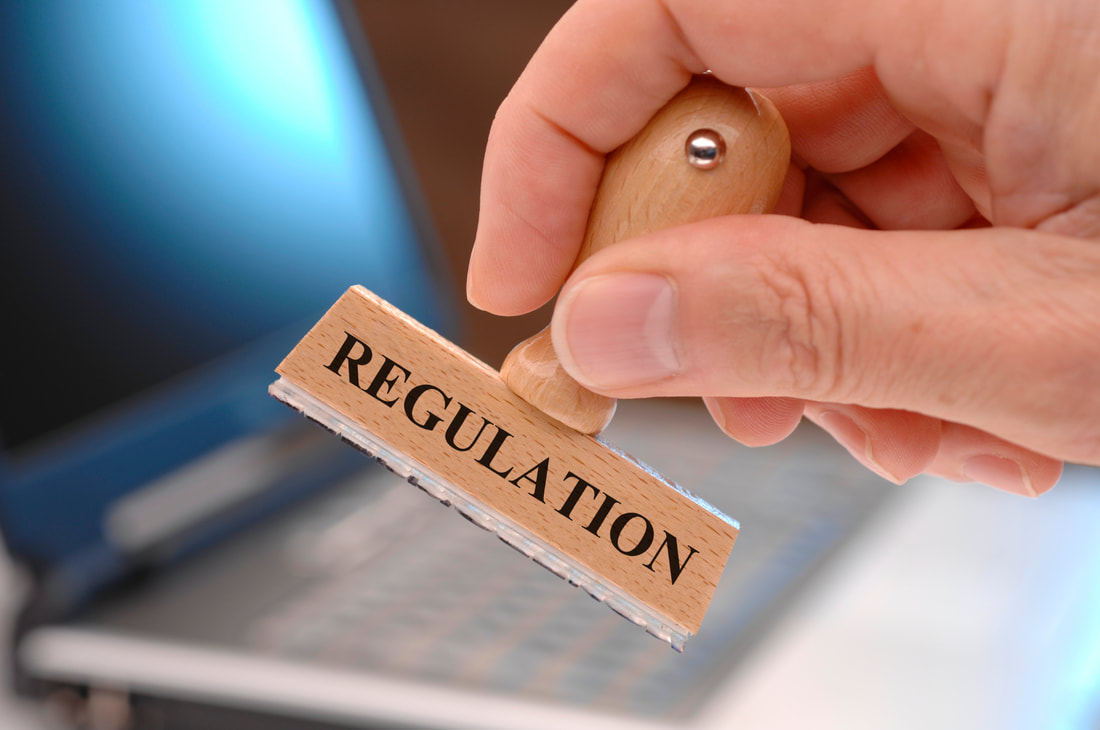
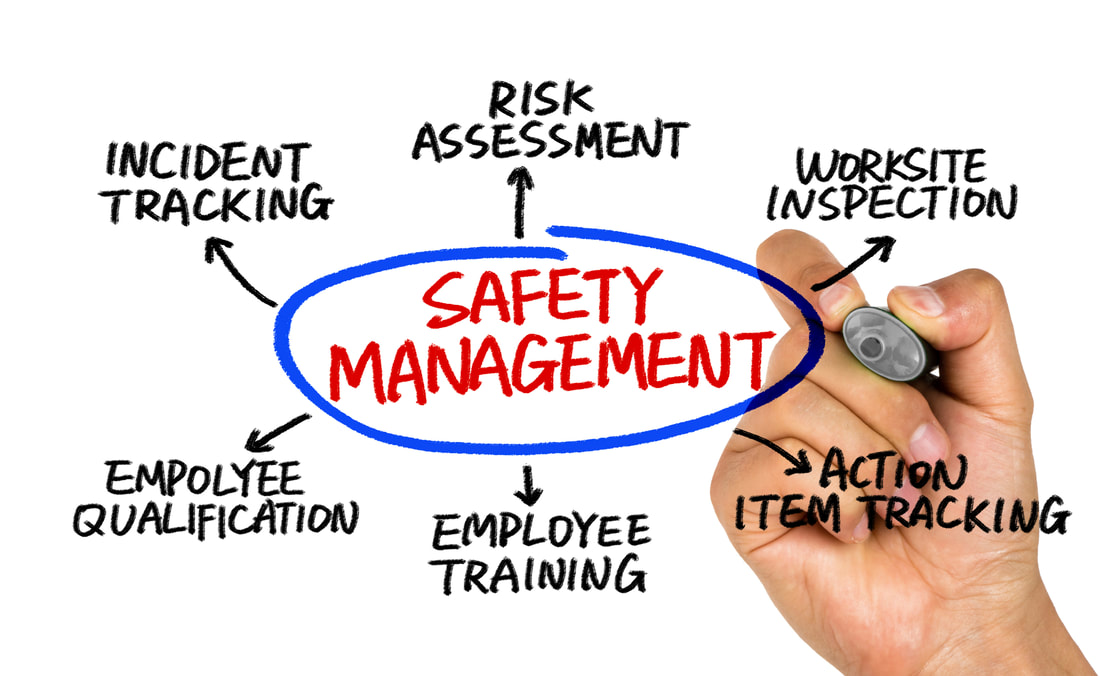





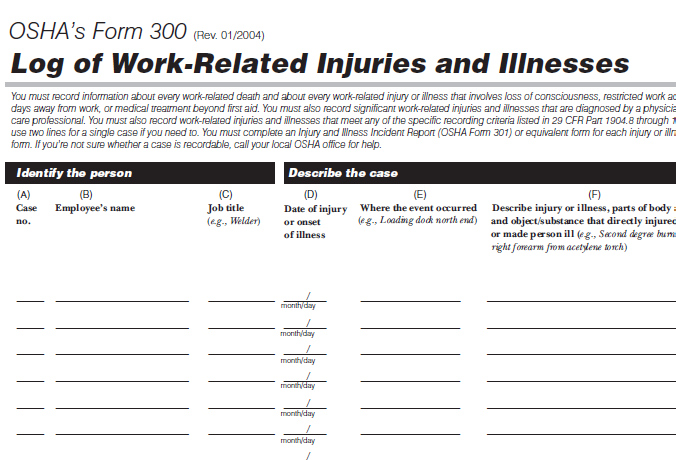
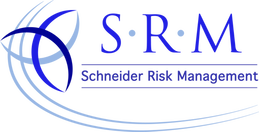

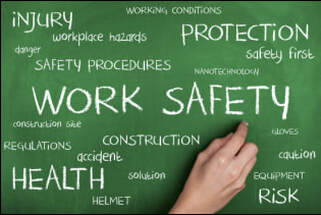
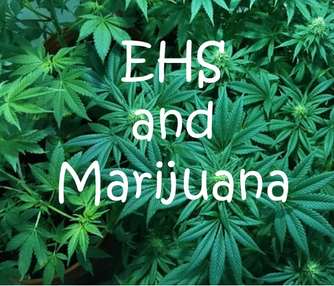
 RSS Feed
RSS Feed
